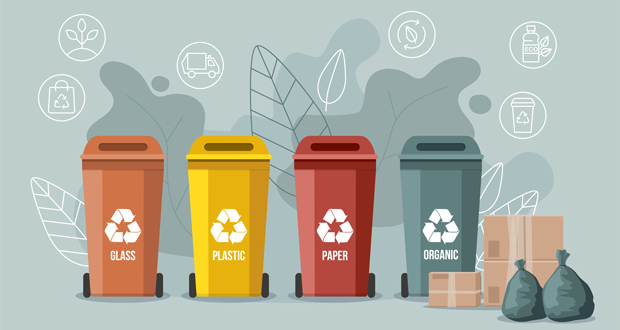 Emma Cooke, Operations Manager at waste management business Envirovue offers advice on improving waste segregation, boosting recycling rates and embedding sustainable practices across factories and industrial settings
Emma Cooke, Operations Manager at waste management business Envirovue offers advice on improving waste segregation, boosting recycling rates and embedding sustainable practices across factories and industrial settings
Every year, the UK produces 41.1 million tonnes of industrial waste, with a significant amount created because of manufacturing and industrial processes.
Complex waste streams within industrial settings present distinct sustainability challenges that require a streamlined approach to waste segregation. As waste management practices have evolved rapidly over the past decade, driven by the UK Government’s commitment to eliminating emissions across all economic sectors by 2050, organisations must adopt tailored approaches to waste segregation to reduce and offset carbon emissions.
REDUCING WASTE AT THE SOURCE
A key principle of sustainable waste management is reducing waste at its source. Within industrial facilities, this requires close collaboration with suppliers to reduce packaging waste and minimise the use of excess materials during the production process. Returning packaging to suppliers for reuse is also an important strategy, as it allows businesses to continue to utilise materials, reduce disposal costs and lower overall environmental impact.
Recycling plays a crucial role in any successful waste management strategy. By ensuring that recyclable materials across metals, plastics and production offcuts are accurately tracked, sorted and processed, manufacturers can prevent valuable resources from being lost to landfill which not only harms the environment but also brings additional costs through taxes and disposal fees.
The careful segregation and recycling of industrial waste not only helps recover raw materials that can be reintroduced into production cycles, but also significantly lowers the demand for new materials. This then reduces the overall energy consumption and cuts down the greenhouse gas emissions typically associated with extracting and manufacturing new products.
By tackling waste at its origin, factories can cut disposal costs, reduce environmental impact, and make segregation and recycling efforts more straightforward.
STREAMLINING WASTE STREAMS
Managers looking to streamline waste processes should conduct data-driven waste audits with regular monitoring to identify ways of minimising waste at the source and ensure waste streams are managed effectively.
Segregation can ensure that valuable recyclables, such as metals, plastics, and cardboard stay out of landfill and are instead returned to the manufacturing cycle or given a new life elsewhere.
A structured segregation plan within every facility can help ensure improved recovery rates. FMs working at manufacturing plants should implement clear, colour-coded segregation systems with the use of high-visibility signage and well-placed recycling stations located alongside waste generation points. Regular training of staff on waste disposal methods can help reinforce the correct sorting practices, with clear policies and rules to help eliminate contamination. Without these systems in place, recyclables may be contaminated, reducing their value or rendering them non-recyclable altogether.
INVESTING IN INNOVATIVE TECHNOLOGY
Technology plays a crucial role in waste reduction, but implementing new solutions can be costly and complex. Partnering with a waste management provider that covers all waste types, prioritises re-use and avoids landfills can be a cost-saving business decision.
In an industrial setting, smart technology enhances efficiency. Digital tracking systems provide valuable insights into waste generation patterns, allowing factories to identify areas for improvement and adjust recycling strategies accordingly.
A provider’s approach should be to help client’s reduce waste at its source by offering end to end solutions across all the waste streams to reduce complexity and deliver cost effective waste management strategies.





